dBm
Showing all 7 results
-
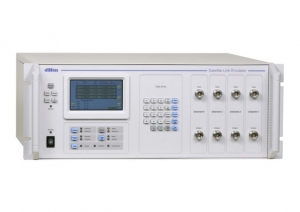
dBm Model SLE9000 Series Satellite Link Emulator
The dBm Model SLE900 replaces the SLE700 and provides wider bandwidth, improved noise floor, and also adds optional AWGN and multipath fading with up to 6 taps per channel. The instrument can be configured with 1 to 4 channels. There are three RF bandwidths currently available: 72 MHz bandwidth centered at either 70 MHz or 140 MHz, 125 MHz bandwidth centered at 140 MHz, and 250 MHz bandwidth centered at 1200 MHz. Link impairments include delay, Doppler, attenuation, phase offset, AWGN, and multipath. Parameters can be set to fixed values in Static mode, or continuously changed in real time in Dynamic mode without any phase discontinuities. Ephemeris data files are downloaded via an ethernet connection and stored internally in solid state memory. These dynamic files can have playback rates from 1 Hz to 1000 Hz, and can be run forward, reverse, continuously looped, or single stepped.
Remote control can be accomplished by making calls from your test software, or by using the SleControl application program provided with the instrument. This application provides control of all SLE functions, as well as manipulation of the dynamic data files.
- Centre Frequency : 70Mhz/140MHz, 140MHz & 1200MHz
- 1dB RF Bandwidth: 72MHz, 125MHz, 250MHz
- Independant Channels: 1, 2, 3 or 4
- Static and dynamic operation
- Phase continuous delay, Doppler, and attenuation changes
- AWGN and C/N generation
- 6 tap multipath fading with Rayleigh, Rician, AOA, k-factor, and correlation controls
- Ephemeris data generation using SATGEN
-
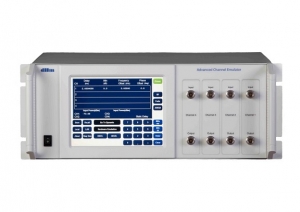
dBm Model ACE9600 Advanced Channel Emulator
The dBm ACE9600 builds upon the SLE900 by adding Payload impairment capability, synchronization of up to 16 channels, 12 tap multipath fading, and 600 MHz of instantaneous bandwidth. The instrument can be configured with 1 to 4 channels. Link impairments include delay, Doppler, attenuation, phase offset, AWGN, frequency hopping, and multipath fading. Payload impairments include IMUX/OMUX emulation (amplitude and delay distortion), amplifer compression effects (AM/AM and AM/PM), phase noise, and spurious signals. Parameters can be set to fixed values in Static mode, or continuously changed in real time in Dynamic mode without phase discontinuities. Ephemeris data files are downloaded via an ethernet connection and stored internally in solid state memory. These dynamic files can have playback rates from 1 Hz to 1000 Hz, and can be executed single run, continuously looped, or single stepped.
Remote control can be accomplished by making calls from your test software, or by using the ACEClient application program provided with the instrument. This application provides control of all ACE functions, as well as manipulation of the dynamic data files. Built into the client are wizards that can generate profiles to emulate band limiting filters such as IMUX/MUX devices, and profiles for amplifier compression.
- Centre Frequency : 1125MHz
- 1dB RF Bandwidth: 72MHz, 125MHz, 300MHz or 600MHz
- Independant Channels: 1, 2, 3 or 4
- Static and dynamic operation
- Timing synchronization up to 16 channels
-
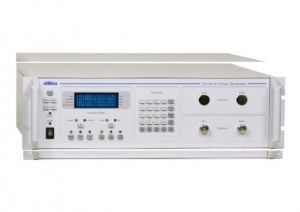
dBm Model CNG Carrier to Noise Generator
The dBm Model CNG-70/140 is a fully automated test instrument that sets and maintains a highly accurate ratio between a user-supplied carrier and internally generated White Gaussian noise. The instrument operates over a wide range of power levels. The modular design provides one or two totally independent channels covering 50 to 180 MHz. The instrument utilizes dBm’s proprietary microprocessor controlled attenuator with 0.015 dB resolution, so resolution uncertainty is less than 0.008 dB. Typical attenuator error is less than 0.02 dB over its entire frequency range and attenuation range. The CNG corrects for noise density and signal level variations over frequency, and integrates the actual noise power over the user defined signal bandwidth. The carrier signal path is never interrupted.
The dBm Model CNG-1-800/2700 covers 800 to 2700 MHz, with the same accuracy as our 70/140 MHz units! In the CNG-1-800/2700, noise generation, attenuation, and power measurements are done at IF, so there is no degradation to ratio accuracy. Total noise bandwidth is 125 MHz, wide enough for virtually every application while still providing a high noise power spectral density.
Key Features:
- C/N, C/No, Eb/No, and C/I modes
- 1 or 2 independent RF channels
- Frequency ranges up to 2.7 GHz
-
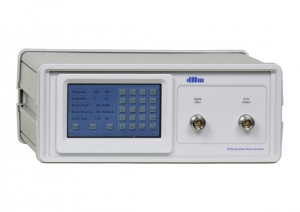
dBm Model WGN White Gaussian Noise Generator
The dBm Model WGN White Gaussian Noise Generator outputs very accurate, high quality white Gaussian noise. The output level can be set as Noise Density or Noise Power in a selectable bandwidth. Factory calibration over the entire frequency range yields 0.25 dB absolute accuracy. The noise power can be varied with 0.015 dB resolution over a 60 dB range. A user supplied signal can be injected into the instrument to combine with the noise. The instrument utilizes dBm‘s proprietary microprocessor controlled attenuator with 0.015 dB resolution, providing an extremely accurate output.
Key Features:
- On/off control of both the signal path and the noise output
- 60 dB noise power range, typically -103 dBm/Hz to -163 dbm/Hz
- Frequency range 100 – 3000 MHz
-
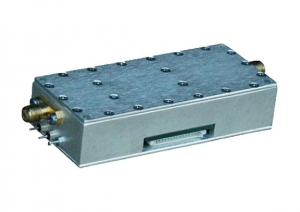
dBm Model SSA Series Broadband Solid State Attenuators
dBm‘s SSA series attenuators cover up to 3 GHz. They are all solid state designs with 1 dB resolution. Switching time is 1000 times faster than relay type attenuators, and reliability and repeatability are outstanding. Power consumption is extremely low. These solid state attenuators can also be configured in groups of up to 16. An addressable 8 bit parallel driver card provides a simple control interface. The interface is double buffered, so attenuation channels can be set individually, or all changed simultaneously.
- Frequency Range: 20 – 3000 MHz
- 1, 8, or 16 channels with single control interface
- Exceptional reliability and repeatability
-
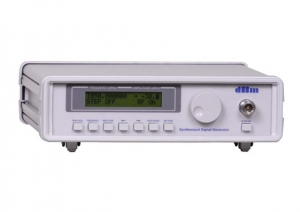
dBm Model SSG Synthesised Signal Generator
So many jobs in the lab require a good quality synthesized RF signal generator used solely as a CW source. The dBm SSG is designed to be a workhorse in the lab, providing a low phase noise synthesized CW output in a small package that is easy to move around, and without the penalty of paying for features you don’t need.
Key Features:
- Frequency Range : 10 MHz – 4000 MHz
- 40dB Power Range
- Low phase noise CW output
- Automatic selection between internal or external 10 MHz reference
- Front panel, RS232, GPIB, and LAN control
-
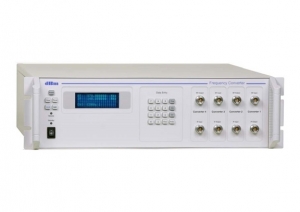
dBm Model UDC Series Frequency Converter
The dBm’s Frequency Converter models cover virtually any band up to 30 GHz. They are available as block converters, synthesized broadband converters, and RF to baseband converters. Instantaneous bandwidth is typically 125 MHz in both up and down conversions. Some standard frequency bands are 800 – 2700 MHz, 870 – 1750 MHz, and ultra-broadband 400 MHz – 18 GHz with IF frequencies of 70 MHz or 140 MHz.
Key Features:
- 8 Converters per Channel
- Tuneable Step Size: 1 MHz
- Input Frequency Range: Typically L, C, S Ku or Ka bands
- Output Frequency: Typically 70 or 140MHz
- Input Power: 0 dBm typical
